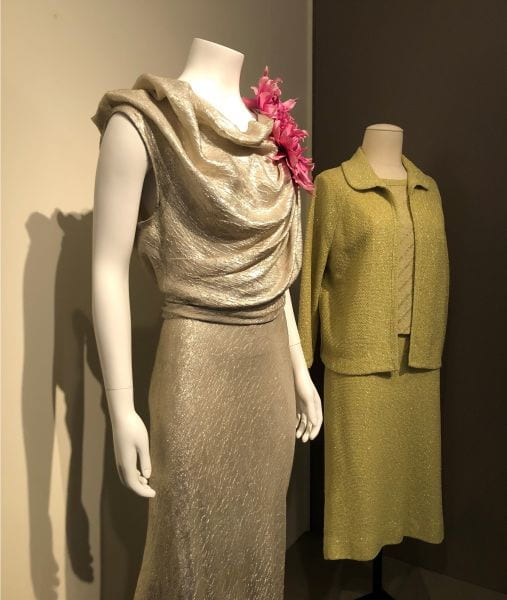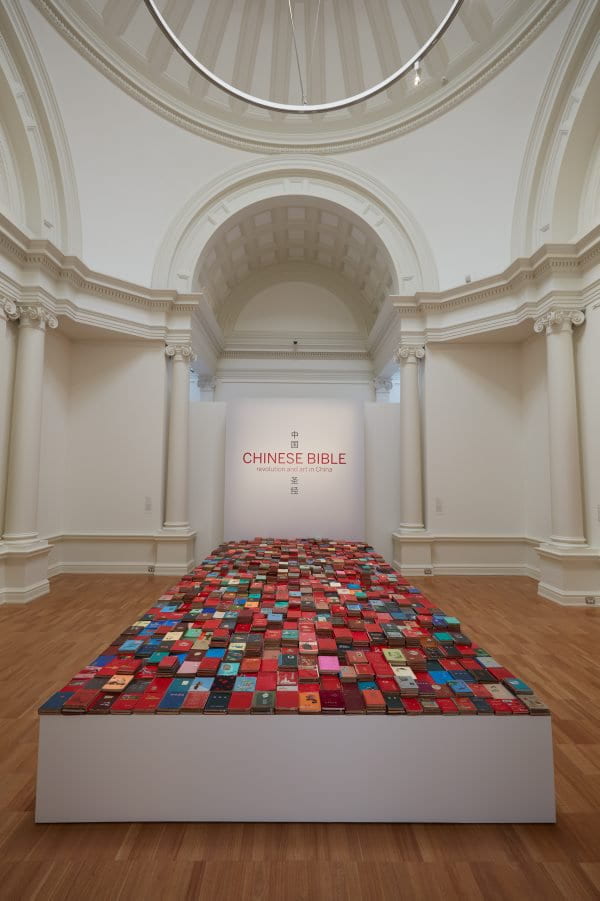
The PolyMuse Project: Part II
PolyMuse is one of the major research projects underway at the Grimwade Centre for Cultural Materials Conservation. The primary goal of the project is to develop methods for conserving plastics (polymers) in collections across museums, galleries, and archives. Of particular concern are the five most volatile plastics, cellulose nitrate, cellulose acetate, PVC, polyurethane, and rubber, which are collective known as ‘malignant polymers’.
We previously covered the PolyMuse project in an interview with lead researcher, Dr Petronella Nel. In this follow-up piece, Forum writer Samara Greenwood spoke with two of the PolyMuse PhD students, Bronwyn Cosgrove, who works on plastics in textile collections, and Cancy Chu, who works on plastics in paper-based archive collections, about their role in the project.
Bronwyn, you have over 20 years’ experience working as a conservator with textile collections. How has that informed your PhD research with the PolyMuse project?
Before starting my PhD I had been working with fashion collections. I found that one of the big issues for institutions without access to scientists or expensive scientific equipment was how to determine exactly what plastics they have in their collections.
To help solve this problem, I’m working on a basic chronology of items and materials. The idea is that we can determine, if you have this item and it looks like this and it is from this time, odds are it is likely to be made from this polymer. This is highly useful for people without high-tech instruments and infrastructure.
What else have you been working on?
As well as undertaking object-based collection surveys and textile conservation industry surveys, post COVID shutdowns, I’m also able to access the labs again!
In fashion collections, many plastics are found in sequins. As much as I don’t want to be known as ‘that lady who did her PhD on sequins’, it is an item that comes up frequently.
I discovered a broad range of polymers have been used in making sequins across the twentieth and into the twenty-first centuries. Some have an iridescent surface and, often, even today, that is the malignant polymer, cellulose nitrate.
Cellulose acetate is a malignant polymer used in the production of both 3D objects and textile fibres. Interestingly, fabric made with cellulose acetate doesn’t seem to have the same degradation issues as cellulose acetate plastic, so I’m investigating that further.
How have you found moving from industry to research?
It has been lovely to jump around between collecting institutions and meet many more people than I would have met developing exhibitions within any one institution. The generosity and interest of people who have been involved in the project is remarkable.
What unusual objects have you looked at?
The theatrical costumes from the Powerhouse Museum, Queensland Museum and Melbourne Museum are fascinating.
For example, Victoria has quite a few drag costumes made in the early 1990s for shows held at the Xchange Hotel in South Yarra. One of those is a wonderful, over-the-top cape called Xanadu. It has 16 different plastics, and I don’t think it has any completely natural fibres at all. It is quite magnificent.

In 2019–2020 you held an exhibition, PolyMuse: Mapping the rise of modern polymers in the wardrobes of Rose and Ella Grainger in conjunction with the Grainger Museum. Could you explain what that was and how it came about?
I was surveying the garment collections at the Grainger Museum, which included clothes from pianist and composer Percy Grainger and his close relations.
Because menswear doesn’t really get exciting in terms of uptake of new materials in the early twentieth century, I was focusing more on Percy’s mother, Rose (1861–1922), and his wife, Ella (1889–1979).
There was a nice generational spread between the two women’s wardrobes. Rose died in 1922 and her wardrobe was mainly natural fibers and materials. We even found buttons made from actual tortoiseshell. In contrast, the latest garment belonging to her daughter-in-law, Ella, was from the 1960s and was found to contain lurex and many other new textile materials.
It was great to compare a dress that Ella wore to the White House in 1938, which is woven from a combination of metal yarns and silk, to the new plastic lurex versions of metallic threads. It became a lovely overview of the chronological development of materials during that period.
Heather Gaunt, the curator of the Grainger Museum, is always so engaged with everything she does, and she was the one who suggested we should do an exhibition. She brought together everything we needed to make it happen, including museum space, and brought Daniel Russo-Batterham from the Melbourne Data Analytics Platform onto the project.

What surprises have your found in your research?
There is a lot of existing knowledge within museums about the problems of plastics and how to conserve them in their collections.
Curators and conservators have picked up experiential wisdom from seeing many objects through the course of their careers and realizing certain plastics always do such and such a thing.
But their focus is more directed to exhibition delivery and community engagement, so they don’t have the time to sit down and prepare something for peer review publication. There is a huge gap between this extensive knowledge resource and the ability to share that knowledge through academic publications. Our job is to work out how to articulate that knowledge in the literature so others can benefit, and it is not just sitting there, siloed in any one institution.
Turning to Cancy — what does your research involve?
I am looking at plastics in paper-based archive collections. I began with an online survey of the industry asking about polymers in their collections.
The main finding was that plastics are indeed in many different paper-based archives in many different forms. Like Bronwyn, I found it encouraging to see the industry already has lots of knowledge, and that our job is to document it and advocate for care of these amazing collections.
I also completed collection surveys at the Art Gallery of New South Wales, the South Australian Museum and right here at the Grimwade Centre in our thesis archive. Having covered galleries, museums, and a university archive it was interesting to compare contexts.
Only a couple of weeks ago, I finished an experiment to test intervention strategies for storing malignant plastics, specifically for plastic book covers made of PVC. I now have a lot of data to analyse, which is exciting.
Have you come across any particularly interesting objects?
I think my favourite is the contemporary installation artwork, Chinese Bible by the artist Yang Zhichao.
Yang Zhichao went to the secondhand markets in China and collected notebooks and diaries from the 1950s to the 1990s. The artwork includes a video of him ritually washing these books. In addition, there’s a physical installation of 3000 of these notebooks laid out filling the gallery space. You can see the visible differences in the bright red and blue book covers, of which one third are made of plastic.
The gallery noticed that the covers were shrinking and pulling back on some of the books. They weren’t sure what to do or how to store them after the exhibition, so they thought, “why don’t we ask the plastics people?”

I surveyed a hundred of the books and found all the covers were made of the malignant polymer, PVC. This plastic is unstable over time, emitting acidic gases which are bad for the paper. Because there are so many of them, the real challenge is how to store these books with the least amount of labour and energy over time. For example, cold storage is not really a possibility, partly because this has a large carbon footprint.
That challenge has been my favourite to think about because there is this contradiction. First, we need to save the paper, which we usually do by storing it away from acid; but we can’t remove them from these covers which are emitting those acids, so what do we do?
What other surprises have you found in your research?
Because I’m looking at paper-based collections, people don’t usually think this would involve a variety of plastics, however amazingly it does. To take a familiar example, a spiral bound book may comprise two, perhaps even three, types of plastic.
When I did a survey at the South Australian Museum, we needed to take out each object to count how many plastics there were. We thought it would be a quick job, with one or two plastics for each item. Initially we were astonished when we found an item with seven plastics, but soon it became a normal occurrence. Such large variety was unexpected.
How have you found working as part of a larger research group for your PhD?
A lot of us have spoken over the years about how supportive an environment it is. I don’t know if I’d be doing so well if we weren’t all working together on the same project. I have benefited so much from having Bronwyn and Sharon to chat with, to say “I just had a thought about this, what do you think?” Having that space to air ideas has been incredible.
More information on the PolyMuse project can be found on their website.
